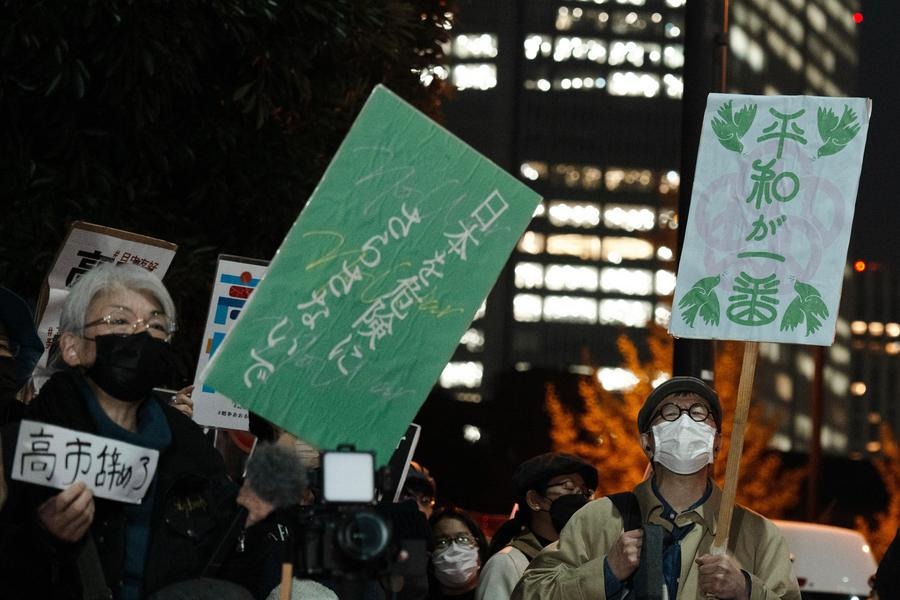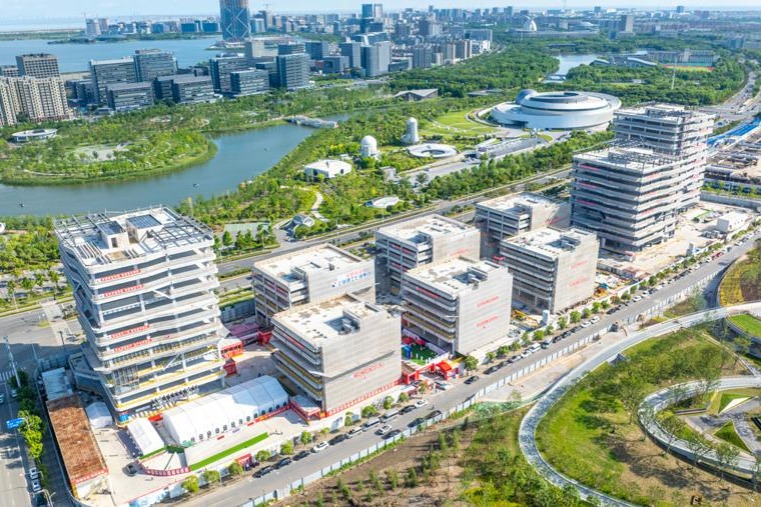Stabilizing supply chains in Asia-Pacific


As the US locks it out of international supply chains, China should build a high-level free trade area, advance the BRI and do more to counter it
In the past two years, the United States has prioritized negotiations within the "Indo-Pacific Economic Framework for Prosperity" on the resilience of supply chain pillars. In the US discourse system, diversifying the procurement, production, and transportation of goods and services can reduce the risk of supply chain disruptions caused by political or natural factors. However, the US is pursuing an offensive rather than defensive strategy, aiming to slow down China's economic progress, lock China out of key international supply chains for critical products, and ultimately gain an advantage in its competition with China.
The US is seeking to exclude China from critical supply chain sectors. The Joe Biden administration positions China as its "most serious competitor" and intends to shape the strategic environment around China to constrain the nation. US National Security Advisor Jake Sullivan said that Washington's primary goal is to reduce reliance on China in the global supply chain and continue to elevate its strategic objectives, which means steps to "impose costs on adversaries" and "even weaken their capabilities over time", in order to prevail in the strategic competition with China.
In terms of regions, the Asia-Pacific is not only a commercially profitable area, but also a geopolitical arena, making it a battleground. Currently, the US is primarily working through alliances with economically developed allies in the Asia-Pacific region to create a more attractive high-tech, high-value ecosystem and to transfer technology and production capacity away from China. It also pledges to provide trade and investment opportunities and advanced technology to developing countries in the Asia-Pacific region, making them important allies in the competition with China and thereby achieving a coordinated strategy toward China.
In terms of industries, the US is prioritizing the restructuring of supply chains in critical sectors such as semiconductors, high-capacity batteries and key minerals, with the specific aim of weakening China's capabilities. For example, the US intends to reduce China's ability to produce or purchase the highest-end chips, in order to secure a lead for itself and its allies in chips and artificial intelligence technologies. In the clean energy sector, the US aims to catch up with China to prevent it from dominating the supply chain in this field, thereby reshaping the global power balance, international relations and future geopolitical and economic landscape. In the case of critical minerals, the US aims to promote the development of competitive new enterprises to reduce China's "asymmetric "advantage and strength.
The US is implementing a new strategy to reconfigure supply chains in the Asia-Pacific region. This includes setting up mechanisms such as the IPEF Supply Chain Council and a Supply Chain Crisis Response Network to manage supply chains in the region, creating a supply chain ecosystem to provide stability and competitive edges for businesses. Managing the supply chain involves coordinating, integrating and optimizing the flow of information, logistics, capital, services and value to establish long-term, stable relationships between upstream and downstream companies in the supply chain.
The US is establishing information-sharing mechanisms to reduce redundancy in supply chain capacity and inventory. It is creating government-to-government emergency mechanisms to rapidly identify bottlenecks in supply chain dynamics and mitigate the risk of production interruptions due to material shortages, thereby encouraging more stakeholders in the supply chain to participate, accelerate their transition, and reduce costs, moving the Asia-Pacific supply chain in the direction designed by Washington.
As the US reconfigures industrial chains in the Asia-Pacific region, it is no longer simply relocating production bases but packaging finance, logistics and regulations into its "supply chain resilience "drive. It is breaking down the boundaries between foreign market layouts and domestic policies, integrating them to promote a comprehensive industrial system centered around the US and extending to its allies.
Previously, the US' effort to contain China's potential catch-up was primarily through controlling chain-leading companies with strong integration capabilities at the front end of the supply chain, which had a strong say in supply chains. Currently, the US is more focused on businesses oriented toward end-users in order to facilitate rapid iterations required to complete innovative products.
It is evident, judging from the current situation, that the US policy adjustments have indeed spurred some momentum in the restructuring of supply chains in the Asia-Pacific. For instance, some Asia-Pacific countries have seen an increase in foreign direct investment as an alternative to China. Some of these countries have replaced China as the main source of imports for the US. Certain industrial alliances that exclude China have also begun to take shape among developed countries in the region.
However, it is worth noting that while the US has increased its imports from other Asia-Pacific countries, these countries are also rapidly increasing their imports of intermediate inputs from China. These trends imply that although direct economic relations between China and the US may be shrinking, the US' dependence on China has not changed. While the new Washington strategy may alter its trade and investment with China, it may not completely decouple supply chains from China's influence.
In the long term, the US' efforts to promote the reconfiguration of supply chains in the Asia-Pacific region face significant obstacles as the supply chains are becoming longer, more complex and more expensive, and the actual results may run counter to its objectives. Washington faces multiple challenges in using public resources to change the current market.
China should consolidate its significant market advantage and expand its openness to the outside world. By facilitating the integration of domestic and international markets and pursuing structural reforms, China can strengthen its advantages and enhance the attraction of its market to neighboring countries.
It's also important to emphasize the role of the World Trade Organization, support the multilateral trade system centered on the WTO, and oppose unilateralism and protectionism. The US is creating a risk management mechanism among member countries through the IPEF to promote the formation of a collective and long-term supply chain that does not rely on China. If the idea behind this mechanism is to prioritize exports to member countries in a global shortage situation, it will inevitably limit exports to nonmembers, which contradicts the non-discrimination principle of the WTO.
China should actively promote the comprehensive implementation and upgrade of the Regional Comprehensive Economic Partnership and stay committed to building a high-level Asia-Pacific free trade area across the board. It should continue to advance the Belt and Road Initiative, work toward the early construction and upgrade of the China-ASEAN Free Trade Area, and improve, consolidate, and expand cooperation mechanisms within BRICS countries. The nation's economic and trade ties with Pacific island nations should be strengthened, and there should be more zero-tariff products within free trade zones. Such steps are an essential part of stabilizing the supply chain in the Asia-Pacific region.
The author is an associate research fellow with the Institute of American Studies at the China Institutes of Contemporary International Relations. The author contributed this article to China Watch, a think tank powered by China Daily.
The views do not necessarily reflect those of China Daily.


































